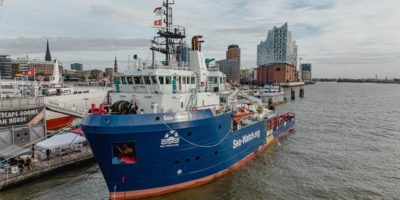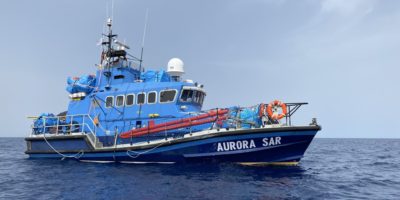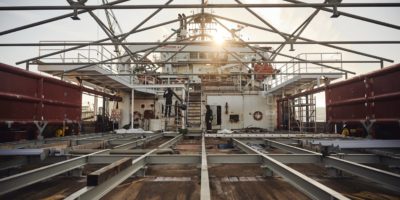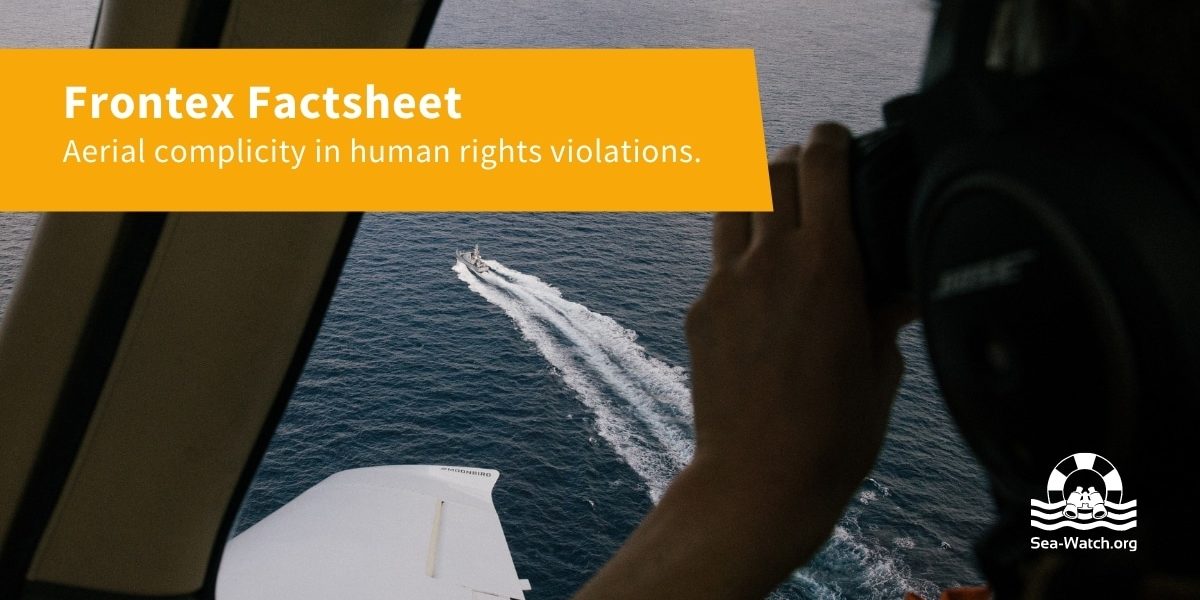Insights into their ongoing and unpunished aerial complicity in human rights violations
Frontex, the European Border and Coast Guard Agency, has the task of preventing people on the move from crossing the external borders of the European Union. In the Central Mediterranean, Frontex is not currently present with naval assets but rather operates aerial reconnaissance aircraft which fly primarily from European Member States. Aerial reconnaissance enables Frontex to gather extensive knowledge about developments in the Central Mediterranean Sea and relay information about boats in distress to the “competent authorities”, though without having to engage in rescues themselves. When spotting a boat in the Libyan Search-and-Rescue (SAR) zone, Frontex (as has been witnessed on several occasions by the crews of Airborne Operations*) often only informs the Libyan authorities about a case, despite NGO or merchant vessels also being in the vicinity. By forwarding the information to the Libyan Joint Rescue Coordination Centre (JRCC) and sometimes even directly guiding the so-called Libyan Coast Guard to the position of a boat, Frontex coordinates and facilitates the interceptions and pullbacks of people in distress to Libya – thus carrying out the EU’s primary aim of preventing people from safely reaching Europe. Returning people to Libya means bringing them back to a place where they are exposed to severe human rights violations and constitutes a breach of international law.
For almost 4 years, the crews of the aircraft Moonbird and Seabird** have witnessed this practice as well as the refusal of Frontex aircraft to cooperate with NGOs at sea, with the intended consequence that people in distress are not rescued in a fast and safe manner and then taken to a place of safety in Europe (as is required by international maritime law). Instead, the agency relies on the so-called Libyan Coast Guard to illegally return people to Libya.
This factsheet outlines a selection of representative distress cases in the Central Mediterranean involving Frontex aircraft which were witnessed by Airborne’s crews. In addition to Airborne’s observations from the air, open radio communications and the retrospective matching of Frontex aircraft flight tracks (which can be partly viewed on open online portals) also serve as a basis for the reconstruction of these distress cases. The combination of this data allows conclusions to be drawn about the involvement of Frontex in pullbacks to Libya.
*Airborne is the department of the NGO Sea-Watch e.V.carrying out reconnaissance flights.
**Since 2017, together with the Swiss NGO Humanitarian Pilots Initiative, Sea-Watch monitors the Central Mediterranean with its two aircraft Moonbird and Seabird.
1. Overview of Selected Distress Cases Involving Frontex Aircraft
Maltese Search-and-Rescue (SAR) zone
1 distress case, around 30 persons, was pulled back to Libya by the so-called Libyan Coast Guard due to support provided by Frontex
1 distress case, 40 persons, was rescued by the NGO vessel Open Arms and disembarked in Porto Empedocle, Italy
Estimated*** number of persons in distress: approximatively 70
Libyan Search-and-Rescue (SAR) zone
3 distress cases, around 201 persons, were pulled back to Libya by the so-called Libyan Coast Guard due to support provided by Frontex
***The numbers are based upon the estimations of Moonbird’s and Seabird’s crew, as well as numbers which the initiative Watch The Med – Alarm Phone, the UNHCR and IOM have provided to us.
2. Details and Outcomes of the Distress Cases
12.02.20., distress case A, around 50 persons: involvement of Frontex in an interception by the so-called Libyan Coast Guard. Moonbird’s crew witnessed the airplane Osprey1, operated by Frontex, staying on-scene with the boat in distress until the so-called Libyan Coast Guard patrol boat Fezzan intercepted it in the Libyan SAR zone. Upon completion of the operation, Frontex was overheard on an open radio channel announcing “operation complete, heading North”.**** The persons on board were pulled back and later disembarked in Libya.
17.06.20., distress case B, around 70 persons: Frontex involvement in an interception and pullback to Libya. Moonbird’s crew spotted the people in distress in the Libyan SAR zone, who were not wearing life vests. When Moonbird’s ground crew called the Libyan authorities, the officer on the phone informed us that the so-called Libyan Coast Guard were proceeding to the boat and already had two patrol boats in the area. When Moonbird’s crew spotted the people again, the so-called Libyan Coast Guard were about to intercept the people and the Frontex airplane Eagle1 was on-scene. The people in distress were intercepted and disembarked in Libya. On this day, the NGO vessel Sea-Watch 3 was also operational in the Central Mediterranean Sea.
28.08.20., distress case C, around 30 persons: interception by the so-called Libyan Coast Guard in the Maltese (!) SAR zone, likely coordinated by Frontex aircraft. Airborne’s ground crew observed a Frontex aircraft orbiting in the Libyan SAR zone, close to the Maltese SAR zone boundary. Later, in the same area, Moonbird’s crew spotted the so-called Libyan Coast Guard patrol boat Al-Kifah heading north in the Maltese (!) SAR zone. Around 5 nautical miles (nm)***** away, a boat was carrying around 30 persons. The Italian and Maltese authorities were informed about the distress case and of its likely interception, but did not take any action to prevent it. Moonbird’s crew observed the interception of the people by the so-called Libyan Coast Guard in the Maltese (!) SAR zone, around 8 nm from the SAR zone boundary. The people were pulled back to Libya. Both the NGO vessels Astral and Louise Michel were also operational in the Central Mediterranean at this time and were never contacted by Frontex aircraft.
22.01.21., distress case D, 81 persons: likely guidance by Frontex aircraft of the so-called Libyan Coast Guard to people in distress, NGO vessel in the vicinity not contacted. The initiative Watch The Med – Alarm Phone was called by the 81 persons on board a boat in distress, and alerted the authorities. The civilian aircraft Colibri 2 then spotted the people in the Libyan SAR zone. Meanwhile, Moonbird’s ground crew observed the track of Frontex aircraft Osprey3, which orbited above the persons and then left the scene, first flying towards Tripoli and then back again to the people in distress. We have to assume that the Frontex aircraft was guiding the so-called Libyan Coast Guard to the distress case. In total, Osprey3 orbited for more than 40 minutes above the persons in distress. By the time Moonbird’s aircrew spotted the people in the Libyan SAR zone, Osprey3 had already left the scene and was heading back to its home base. The so-called Libyan Coast Guard patrol boat Fezzan was at this point only 1 nm away. Moonbird’s crew observed Fezzan intercepting the people and pulling them back to Libya. The NGO vessel Ocean Viking was operational in the area at this time and was never contacted by Frontex’s aircraft in order that it rescue the people. Instead, Frontex most likely coordinated a pullback to Libya.
07.02.21., an empty boat on fire and an interception likely coordinated by Frontex aircraft. On 07.02., Moonbird’s ground crew observed Frontex aircraft Eagle1 orbiting around a position in the Libyan SAR zone. When Moonbird’s aircrew arrived on-scene, an empty burning boat was spotted. The so-called Libyan Coast Guard patrol boat Fezzan was also spotted on scene at this time with around 32 persons on deck, who were later pulled back to Libya. According to the observed Frontex track, we have to assume that Frontex aircraft once again coordinated a pullback to Libya of people in distress.
12.02.21., distress case E, 40 persons: Frontex and Maltese aircraft involvement, non-assistance by merchant vessels, so-called Libyan Coast Guard intimidation of NGO crew in the Maltese SAR zone. Seabird’s ground crew observed Frontex aircraft Eagle1 orbiting around a position in the Maltese SAR zone. Arriving on-scene, Seabird’s crew found 40 persons in distress who were not wearing any life vests. The waves at this time were higher than 1 meter. The merchant vessel Vos Triton, flying the flag of Gibraltar, was the nearest vessel in the vicinity. The port authorities of Lampedusa were informed via radio about the people in distress, and confirmed that they would coordinate with the Italian Coast Guard regarding the case. Meanwhile, the Vos Triton was heading away from the people, and the merchant vessel Asalet, flying the Turkish flag, altered its course to assist the people. The Maltese authorities only took the information provided by Seabird’s ground crew but provided no information in return, insisting that they were busy with many cases. The Italian authorities confirmed having received the email from the ground crew but also did not provide any further information, advising a call to the “competent authorities”, namely the Maltese. Proceeding with the mission, Seabird’s crew found the so-called Libyan Coast Guard patrol boat Fezzan in the Maltese (!) SAR zone, heading at full speed towards the people in distress. The Libyan authorities were never informed by Seabird’s ground crew regarding this boat in distress, since the boat was located in the Maltese SAR zone. Therefore we must assume that the presence of the so-called Libyan Coast Guard in the Maltese SAR zone was coordinated by one of the European actors involved in the case. The NGO vessel Open Arms then also arrived on-scene, heading towards the boat in distress. Seabird’s crew observed the so-called Libyan Coast Guard next to an Open Arms RHIB******, trying to block the RHIB by driving in front of it and using the ensuing waves to disrupt its course. The so-called Libyan Coast Guard patrol boat then headed south, passed by another deployed RHIB. When Seabird’s crew checked on the people in distress for a final time, an aircraft belonging to the Armed Forces of Malta was also on-scene. The people were rescued in the evening by the NGO vessel Open Arms and disembarked in Porto Empedocle, Italy on 16.02.
**** A video of the pullback and Frontex aircraft is available at: https://twitter.com/seawatch_intl/status/1227683058679271426
***** “Nautical Miles” is the unit of measurement used at sea. 1 nautical mile is equal to 1,852 kilometers.
****** A rigid inflatable boat is a fast, lightweight and stable boat usually used by the military for operations at sea.
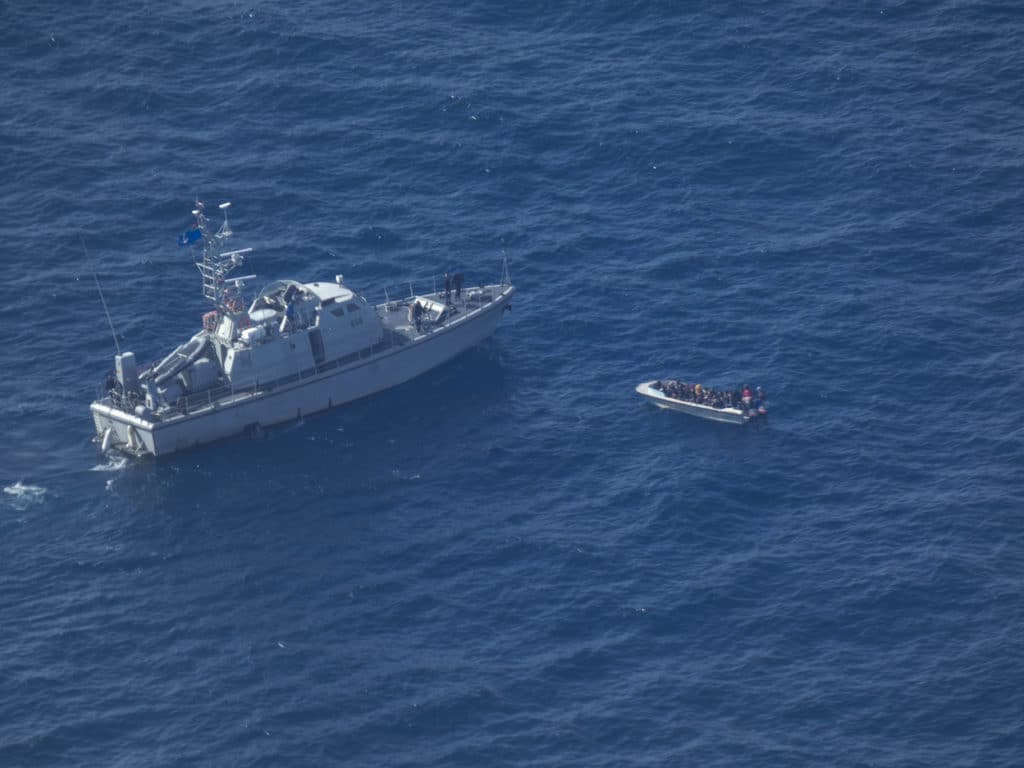
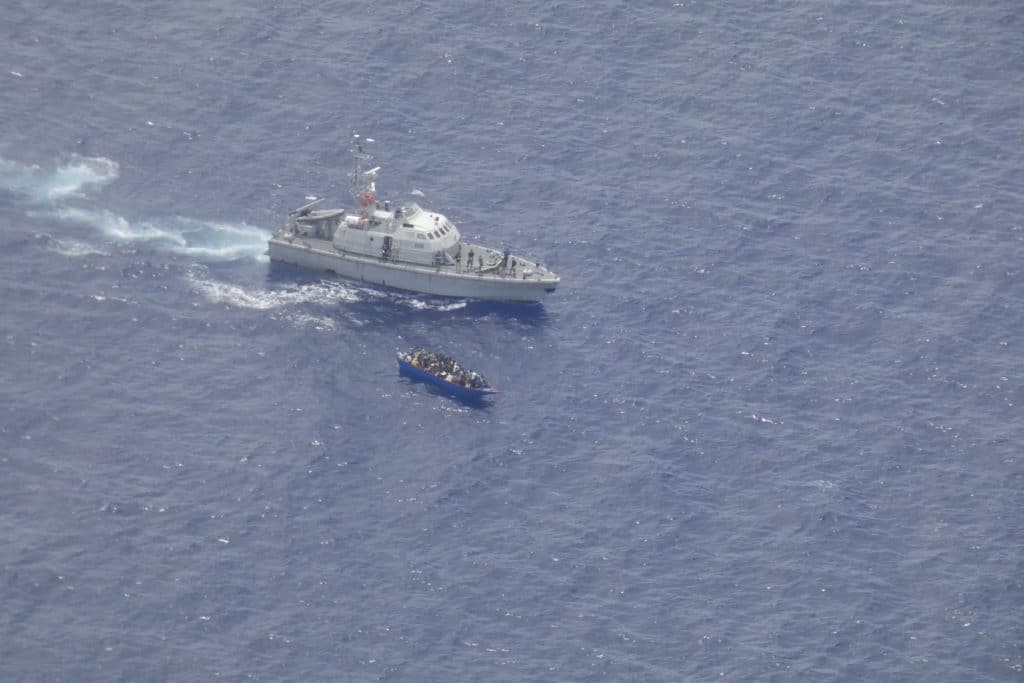
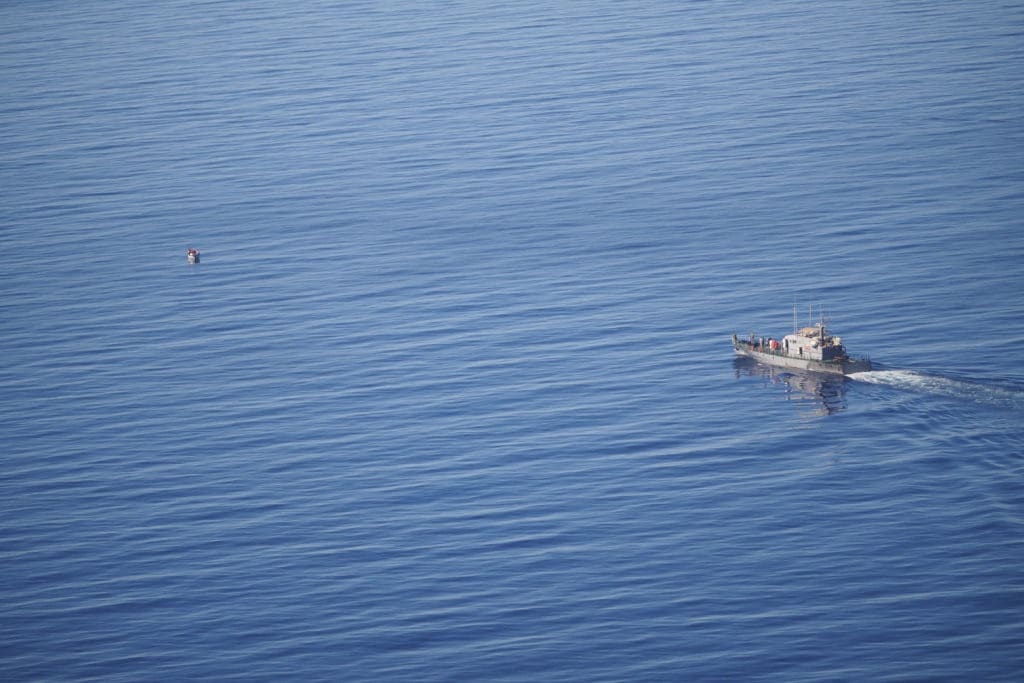
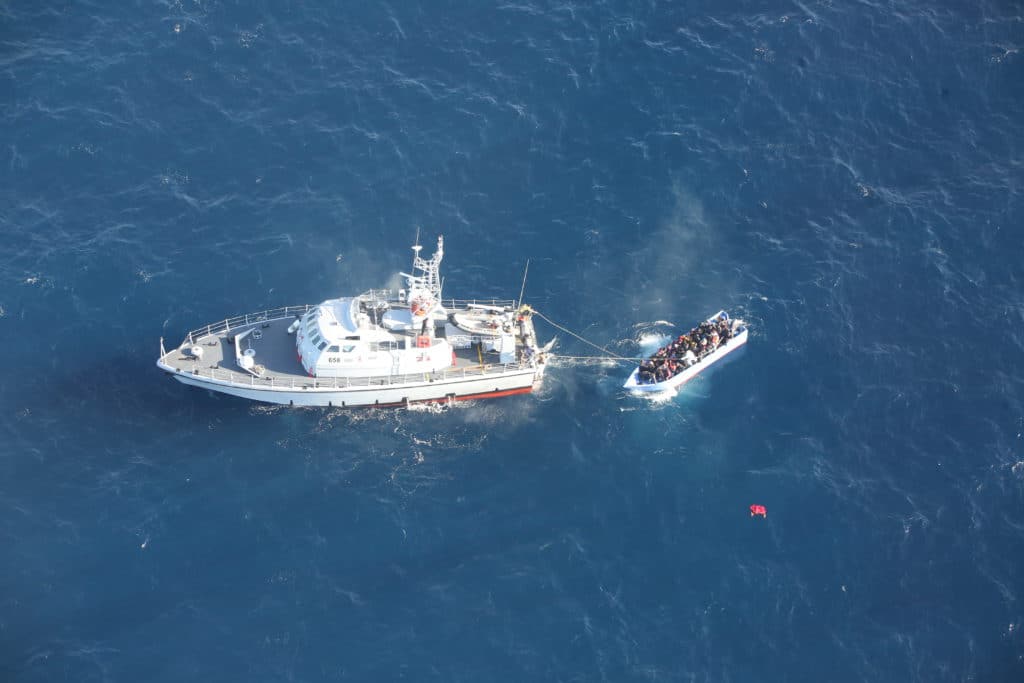
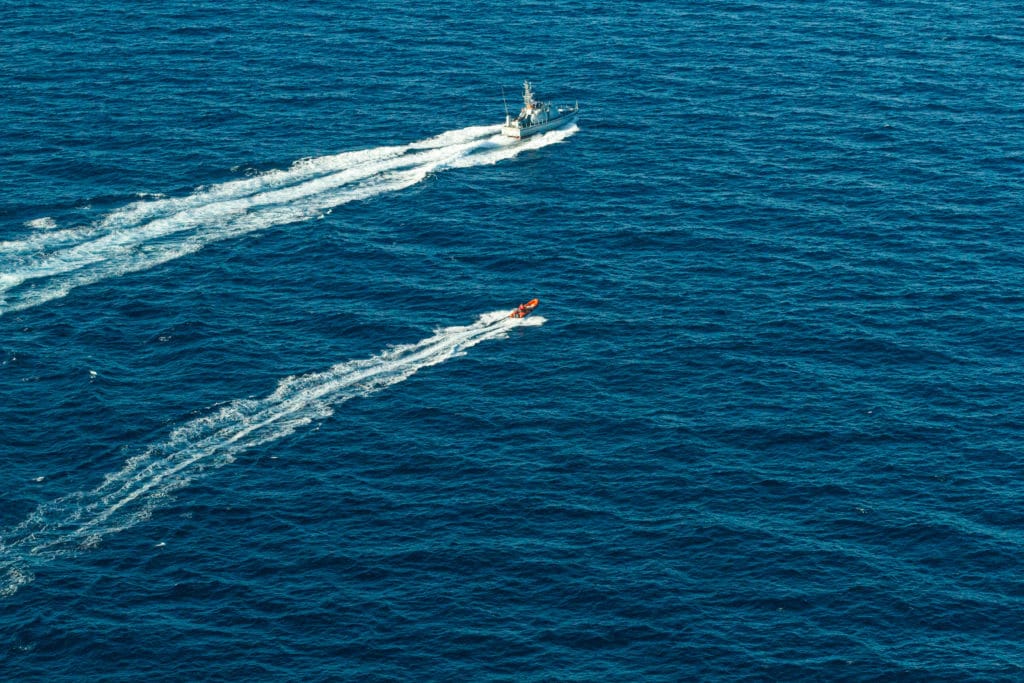
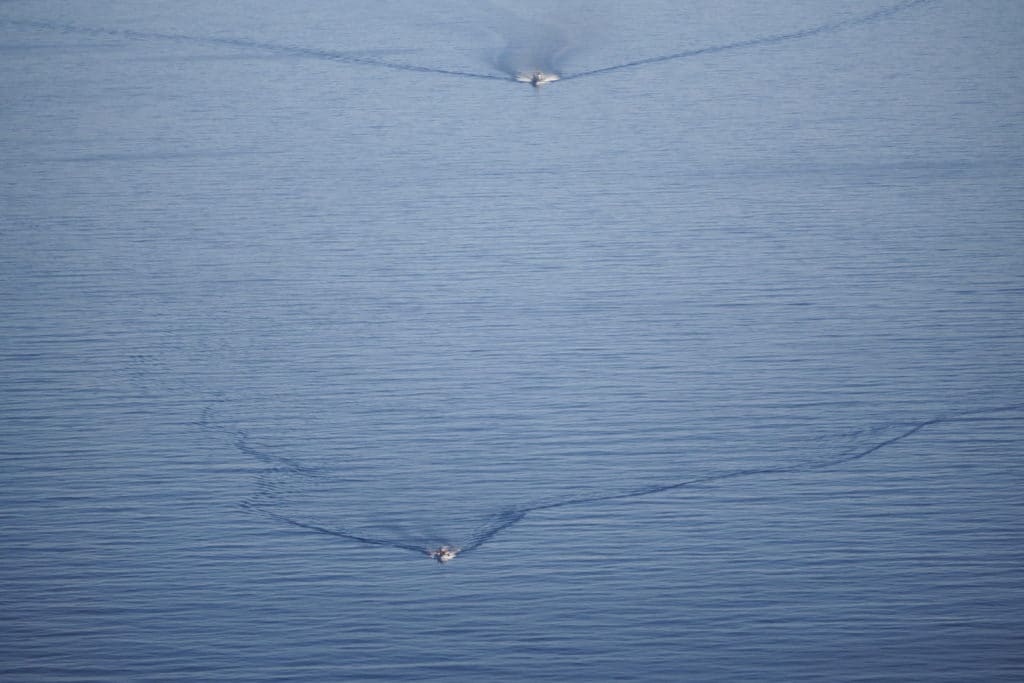
These missions highlight once again:
- the externalization policies of the European Union, which is complicit in pullbacks to Libya and thus a facilitator of human rights violations
- the participation of the European Border and Coast Guard Agency Frontex in the interceptions and pullbacks undertaken by the so-called Libyan Coast Guard
- the lack of cooperation of Frontex with other vessels in the vicinity available to conduct rescue operations
- the need for NGO vessels in the Central Mediterranean in order to uphold the law and save human lives
We therefore demand:
- The immediate abolition of Frontex – an agency which systematically violates human rights and maintains the EU’s isolation policy
- Instead, a full-scale sea rescue programme coordinated and funded by the EU
- Safe and legal entry routes to the EU, so that no one is forced to make the dangerous crossing over the Mediterranean Sea

